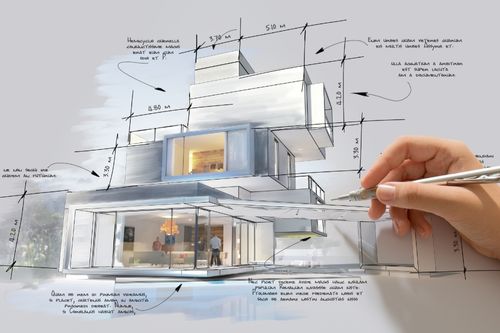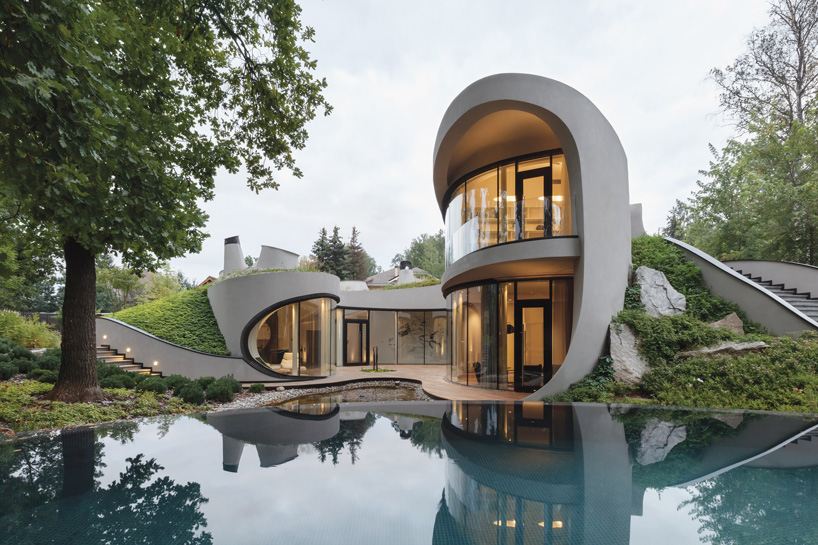Explore Prize-winning Tasks by Distinguished CDA Architects
Explore Prize-winning Tasks by Distinguished CDA Architects
Blog Article
The Influence of Technological Developments on the Design Practices of Contemporary Architects
The fast advancement of technical devices has actually substantially improved the style landscape for modern engineers, cultivating extraordinary degrees of advancement and sustainability. The combination of Building Details Modeling (BIM), parametric layout, and artificial intelligence has not just structured partnership among diverse teams but also redefined job implementation. As architects welcome these improvements, they are confronted with intricate difficulties that could impact their innovative procedures. Discovering these dynamics discloses a nuanced interaction between modern technology and standard style approaches, prompting a better exam of what the future holds for architectural techniques.
Advancement of Architectural Equipment
Exactly how have architectural devices changed the layout and construction processes over the centuries? The evolution of architectural devices has actually substantially affected the efficiency, precision, and imagination of layout and building.
With the advent of the Renaissance, the intro of the compass and the protractor marked a crucial shift. These tools allowed engineers to accomplish higher accuracy in their layouts, promoting the appearance of even more elaborate and in proportion buildings. The Industrial Revolution further revolutionized building technique with the intro of mechanized tools and products, permitting for bigger and much more ambitious tasks.
In the 20th century, the growth of computer-aided layout (CAD) software program changed the landscape when again, giving engineers with extraordinary capacities in modeling and visualization. Today, advanced devices such as Structure Details Modeling (BIM) and parametric design software continue to push the borders of building development, allowing a more integrated method to style and building and construction processes.
Boosted Partnership in Layout
As technology remains to progress, improved partnership in style has come to be a cornerstone of modern-day building technique. The assimilation of electronic tools such as Structure Information Modeling (BIM), cloud-based platforms, and progressed visualization software has actually transformed the method engineers, engineers, and stakeholders communicate throughout the layout process. These tools promote real-time interaction, allowing teams to share ideas, modifications, and comments instantly, despite geographical area.

Furthermore, interdisciplinary partnership has actually been structured with these technological developments, allowing engineers to work much more very closely with other specialists, such as urban planners and ecological professionals. The outcome is a much more natural method to develop that considers various point of views and proficiency. Eventually, enhanced cooperation in design is not merely a trend; it is essential for creating innovative, practical, and cosmetically pleasing architecture in a significantly complex world.
Sustainability Via Technology
Sustainability in style has increasingly ended up being linked with technological innovation, driving the industry toward eco accountable practices - cda architects. Contemporary engineers are leveraging sophisticated innovations to lessen environmental impact while boosting the efficiency of structures. One famous example is the use of Structure Details Modeling (BIM), which enables precise planning and resource appropriation, lowering waste throughout building and construction and promoting power efficiency throughout a building's lifecycle
Additionally, wise products and energy-efficient systems are being integrated into layouts to optimize resource usage. Technologies such as solar batteries and green roofing systems harness eco-friendly energy sources, contributing to decreased carbon impacts. In addition, the application of man-made knowledge in layout procedures makes it possible for designers to simulate and analyze energy intake, guiding choices toward more lasting results.
The combination of sustainable innovations not only lines up with international ecological objectives however additionally fulfills a raising demand from customers for eco-friendly solutions. As engineers accept these developments, the focus changes in the direction of developing rooms that are not only aesthetically pop over to this web-site pleasing but also functionally lasting, thereby redefining the standards of modern style. This way, modern technology functions as a stimulant for sustainability, allowing designers to create structures that regard and boost the all-natural environment.
Difficulties in Application
While technical innovations in design hold excellent pledge for boosting sustainability, their execution usually comes across considerable obstacles - cda architects. One key barrier is the high knowing curve linked with new technologies. Designers and construction specialists might need extensive training to efficiently use sophisticated software application and devices, which can postpone job timelines and enhance prices
Furthermore, the combination of arising innovations, such as Structure Information Modeling (BIM) and lasting products, frequently demands partnership throughout multidisciplinary teams. This collaboration can be prevented by differences in experience, process, and communication designs, bring about potential problems and ineffectiveness.
Financial restrictions further complicate the fostering of innovative technologies. Numerous architectural companies, particularly smaller ones, may lack the sources to purchase sophisticated devices, restricting their ability to take on larger companies that can pay for such investments.
Moreover, regulatory frameworks and building regulations might not maintain rate with technological advancements, developing ambiguity and potential compliance issues. This obstacle can inhibit engineers from completely accepting brand-new modern technologies, as the risk of non-compliance might surpass the advantages. As a result, dealing with these execution challenges is vital for the effective combination of technical improvements in contemporary building practices.
Future Patterns in Style
The challenges related to the implementation of new technologies in design have motivated a reevaluation of future patterns within the sector. As architects navigate problems such as sustainability, urbanization, and social equity, they are progressively embracing innovative technologies to enhance layout performance and ecological performance.
One popular fad is the combination of expert system (AI) in the style procedure. AI tools can evaluate vast datasets to educate design choices, boosting both imagination and capability. Building Information Modeling (BIM) continues to progress, enabling real-time partnership among stakeholders and assisting in structured project management.
Lasting layout practices are see this website likewise acquiring energy, with architects concentrating on adaptive reuse and regenerative layout concepts that lessen source consumption and waste. The incorporation of smart products and renewable resource resources will even more boost the resilience of buildings when faced with climate change.

Verdict
Technological developments have dramatically reshaped building layout methods, helping with improved precision, cooperation, and sustainability. The combination of devices such as Building Info Modeling and parametric design software program, along with man-made knowledge and clever materials, encourages designers to attend to complicated challenges more properly.
Report this page